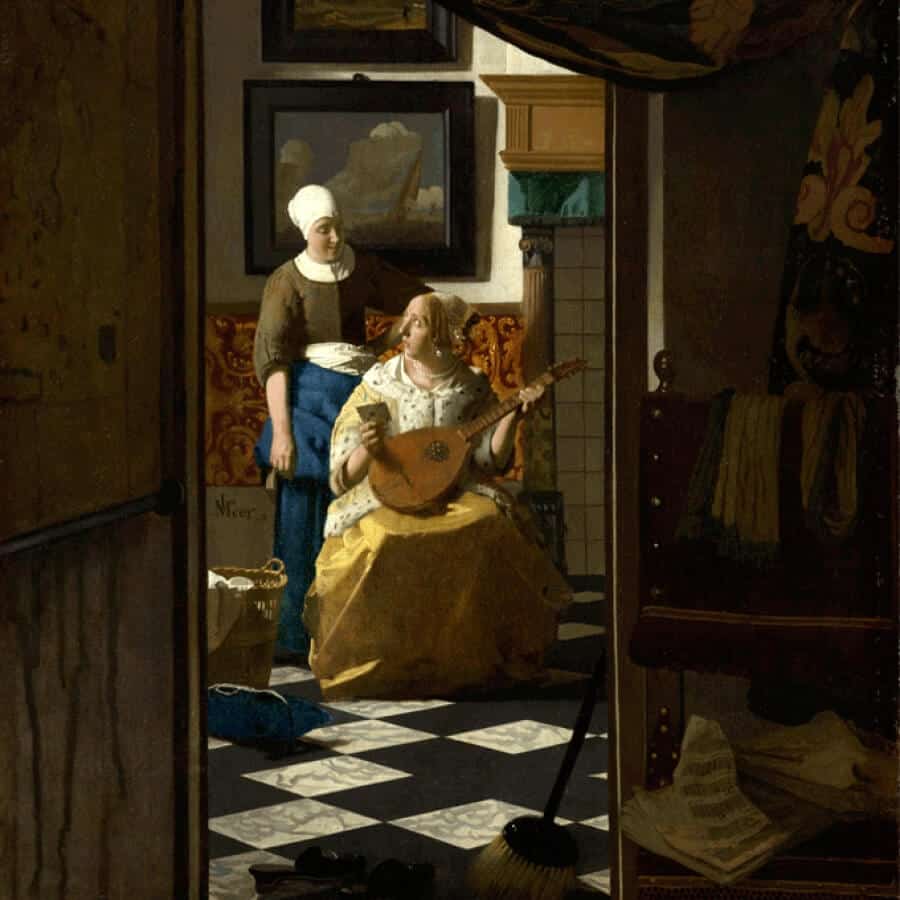When you look at the painting The Love Letter by Johannes Vermeer, the title, at first glance, seems contrived. The letter itself is just barely visible. As a matter of fact, the cittern – the musical instrument – in the woman´s hands seems to play a much more important role in this beautiful painting.
Symbolism has been a consistent theme through the history of art. In the case of The Love Letter, it is the cittern in the end that helps us to understand the written message that is hidden from the viewer. And to keep any doubts away, it goes further to reveal more symbols that are latent in image.
Paintings that give the observer a glimpse into the daily life of the figures portrayed were especially popular during 17th and 18th centuries. They are called genre paintings, and Dutch genre art has an undeniable place in this phase of art history. Paintings depicting love letters are in a category of their own. Such artists as Jan Vermeer, Gabriel Metsu, and Samuel van Hoogstrate contributed to the art world with one or more paintings of this type.
Now we return to Jan Vermeer and The Love letter.
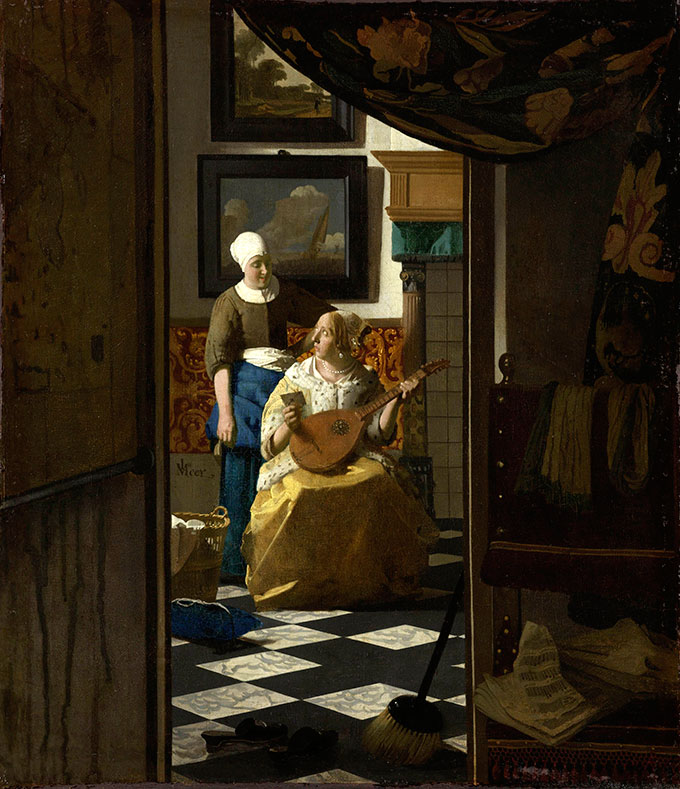
The scene depicted has the feel of looking through a key hole. The open door, the curtain hovering above, the chaotic composition of not very attractive daily objects in the foreground give the impression that nobody was expected. Indeed it gives tje impression that we are intruders who have caught the pair in the centre by surprise.
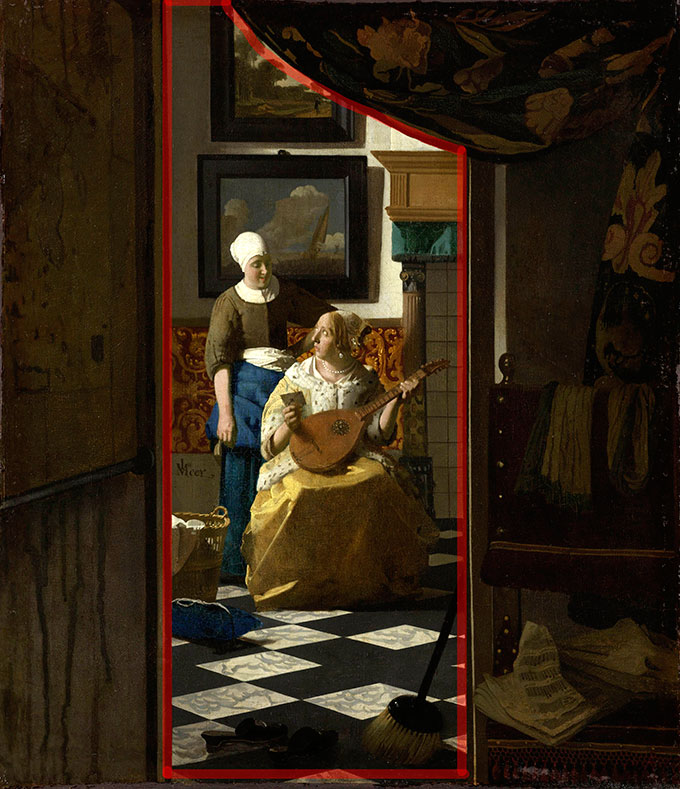
The picture surely portrays something that was to supposed to remain in the privacy of the lady‘s house.
Apart from the obvious look of expectation in the woman´s face as she looks at the maid who is handing her the envelope, other symbols confirm the confidentiality of the message. Examining these attributes is like reading a foreign language. The sequence of symbols is revealed only to the experienced eye.
The cittern is a symbol of love – shared and carnal love.
The two pictures hanging on the wall – paintings within the painting – further support the theory of forbidden love. A ship on the sea is the theme of the painting right behind the maid´s head, and it symbolises the lover’s search for a safe harbour. And the painting above – a lonely landscape with a person in the foreground – illustrates the separation of the lovers.
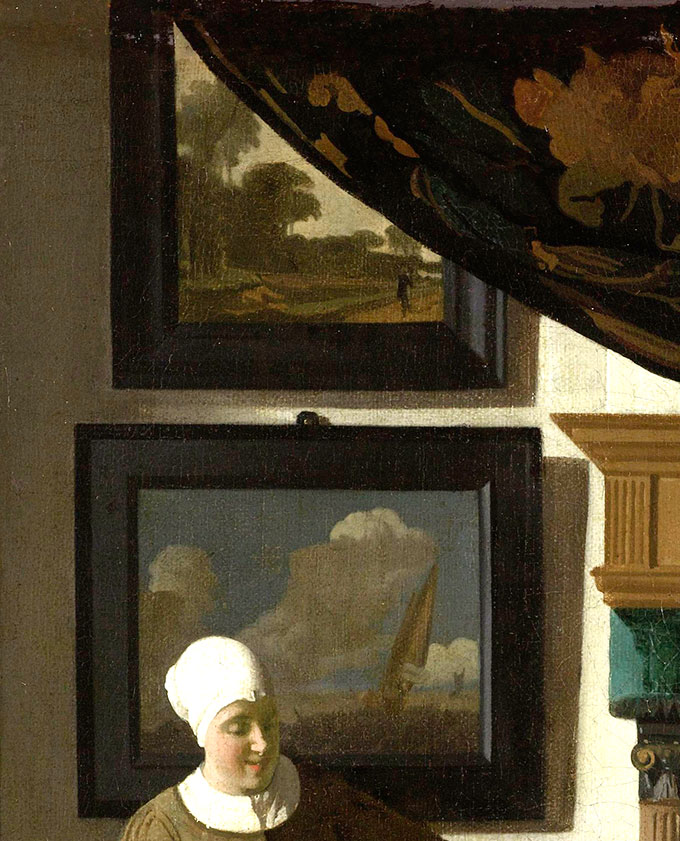
The broom and the slippers also have symbolic meanings.
Slippers symbolize sex in general, and loose women in particular – and here disclose an illegitimate love. The yellow dress, associated with prostitutes, only adds to the symbolishm.
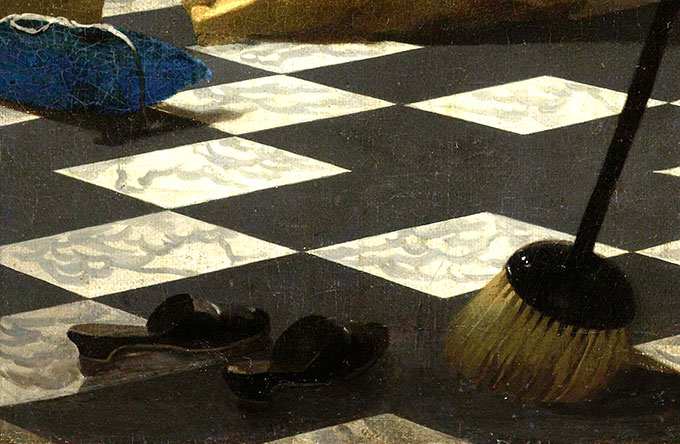
The broom in the foreground also contributes to this theory. A broom, depicted in a household scene, can suggest that a marriage has been forgotten or put aside. And finally, „marrying over the broom“ was a term that meant a couple out of wedlock.
The composition of the scene seems mysterious at first, but with a closer inspection it reveals a moralistic meaning.
Photo: By Johannes Vermeer – Rijksmuseum, Amsterdam, Public Domain, Link / Editing for the purpose of this article: Martina Advaney
Support us!
All your donations will be used to pay the magazine’s journalists and to support the ongoing costs of maintaining the site.
Share this post
Interested in co-operating with us?
We are open to co-operation from writers and businesses alike. You can reach us on our email at [email protected]/[email protected] and we will get back to you as quick as we can.
